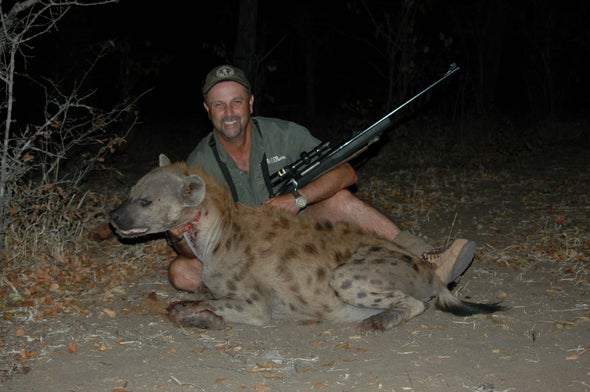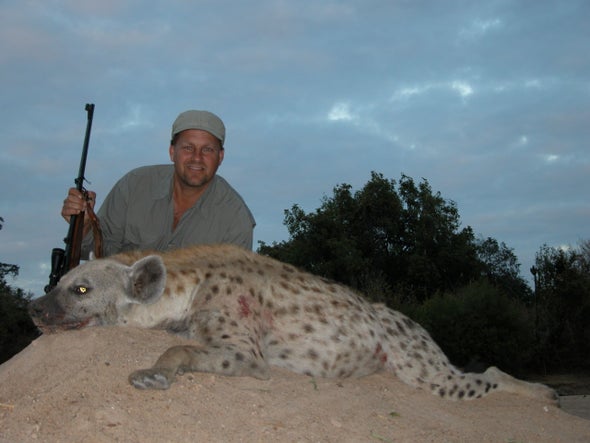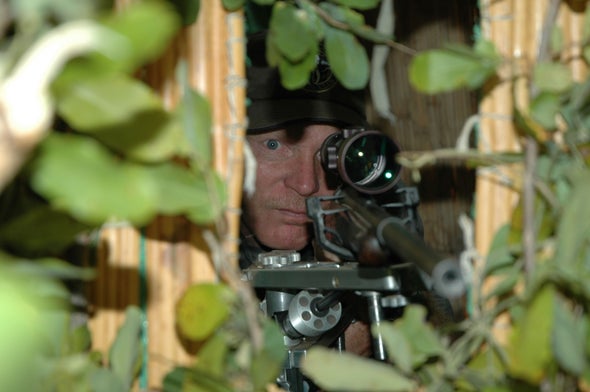Fisi-Africa’s Eternal Voice
By Dave Fulson • Nov 15, 2025
The historic impression of the hyena is that he is Africa’s garbage disposal, and he is beautifully suited to that unpleasant task. A hyena's bite force is among the top strongest on any mammal on Earth. Africa can offer sensory overload on an unprecedented scale, especially for someone experiencing it for the first time. Your first African sunset will never be forgotten, the same as your first up-close look at the immensity of a bull elephant without the security of a zoo fence.

But for me, it is the sounds that I miss most between my extended visits to Africa's wild places. The reverberating nasal honks and grunts of hippo bulls in the river, sorting out nocturnal territory issues in front of my tent is one of my favorites. The gut-wrenching, truly indescribable, challenging roar of an angry elephant at close range is not pleasant in any form, but besides being a true sound of death, it will forever haunt you once experienced and survived it.
The soft sound of wood doves over morning coffee, all the way to the iconic roars and moans of old Simba greeting the dawn, are sounds that tell me I'm back in the home of my heart.
But there is one particular voice that symbolizes true, wild Africa, and it belongs to Fisi, or M'beri, depending on where you happen to be standing- the spotted hyena.
A hyena has an astonishing menu of vocalization at its command. There are calls alerting the clan to the presence of a predator, and calls used to locate other members of the clan when separated. They make other vocalizations used in attempts to dominate or submit to members of their clan. Other calls are used for summoning their young, or to assemble for the hunt. For some reason, perhaps just to aggravate him, hyenas can make a near-perfect, although at reduced volume, rendition of a lion roar. But my all-time favorite is the iconic "whoooooop, whoooooop" they make in the dark of night just to tell you he's out there. Man, I love that sound!
Most people think of the hyena as a skulking coward, the eater of rotting flesh he either finds or steals. The latter is certainly true, but I know him too well to call him a coward. In countless instances since the beginning of time, the death of old lions, his eternal enemy, is often the result of a mob of hyenas discovering a crippled or aged lion, alone and vulnerable. In classic gang warfare style, old hatreds surface, the numbers favor one side, and a final, bloody, and grim assault leaves the hyena with a vanquished foe, and once tempers have cooled, a meal.
The hyena can be a bully, especially with a clan backing up its bravado, but it will run, shrieking and gibbering when challenged by wild dogs, leopards, or especially lions. It is above all else, a survivor. They keep the savannah clean and possess the ability to crack bones, including the leg bones of elephants, making them a perfect processor of meat, hide, horns, and hooves. The specialized gastric system also allows for the digestion of anything I can get past his throat and into its stomach.
But the hyena is a great example of the motto, Patience-Hell, let's go kill something! The hyena, especially when hunting as a clan, is an effective and ruthlessly efficient apex predator capable of tackling game up to buffalo, although plains game species make up the majority of their kills. Hunting solo, the hyena is looking for smaller prey, and during the calving season, he makes a living shadowing pregnant antelope mothers waiting for a calf to drop, so he can run in and make an easy kill. This is a harsh reality to witness, as I have seen it up close, but nature has a plan, and the hyena is simply doing what it was designed to do to survive.
Do not let that sloped back and shuffling gait fool you; it can run with both speed and endurance. When chasing prey, it can lope at a fast clip for astonishing distances to wear down the intended victim.
The spotted hyena is the largest of all the hyena subspecies, with a big female(females are larger than males) weighing up to 190 pounds. I have had many safari clients over the years, after bagging their hyena, comment that they were much larger than they had anticipated.

African myth and folklore paint’s the hyena as an earthly harbinger of death. Some hyena are said to be the personal property of witches and will kill or maim as commanded on a contract basis between the witch and her clients. The rest of the world has werewolves, but Africa, even today, finds a large part of the remote, rural populace firm in their belief that an influential witch can transform hyenas into human form to commit murders, then turn them back into regular four-legged hyenas once their evil work is accomplished, leaving them free to scamper back into the bush until called on again. Laugh if you will, but the old-timers who truly understand bush Africans do not doubt their beliefs, even if they do not share them.
Ok, while this is not a graduate study on the species, I provide these facts in order to introduce the question "Is the hyena a legitimate sporting animal?" I'll answer my own question with a resounding yes!
First, hyenas are incredibly intelligent creatures. There are recorded instances of life spans of up to 25 years, although in the wild, it would probably be shorter on average. They learn from their mistakes and rarely make the same one twice. There are basically two methods to take a hyena on safari–baiting, and chance encounter. I have taken them both ways and filmed many more with each technique. If legal, they will also enthusiastically respond to a varmint call. But, if you really want one, I will put my money on a serious baiting plan.
One thing for certain, hyenas are not picky about bait. Hang it up, and they will show up. To increase your odds, once a bait has been hung where the animal must stand on his back feet to feed, make sure your team leaves a scent drag consisting of a revolting mix of intestines and water from various points, but all coming back to the bait tree.
Hyenas are great travelers, and most cover a large area in search of food. Its nose is better than a blue-ribbon bird dog's, and if it crosses your scent drag, he will follow it to your bait.
If your PH knows his business, a clear path allowing for a silent pre-dawn approach has already been laid, and the trail marked with toilet paper so you can approach without a light. At the end of your walk will be a well-concealed blind with a shooting rest of some kind, a small peephole for the PH, one for your rifle, and two quiet chairs. Any sound getting set up will send your prey on its way, game over. I have waited out many, many cold mornings mentally willing shooting light to appear while I listened to one or more hyenas crunching bones. I have also seen shooting light reveal all manner of animals, including lion, leopard, honey badgers, and vultures eating my bait. Meat is very popular in Africa!

But if all goes right, a big hyena, or perhaps several, will still be feeding when shooting light arrives. Your PH will scan the bait, advise you if the hyena is mature, and tell you which one, when to shoot, etc.
Any medium caliber will kill him, but in truth, your scope selection is far more important than caliber. I have shot the Trijicon Accu-Point series of scopes for decades, and the tritium aiming point is a lifesaver because it allows perfect, illuminated target acquisition and a precise aiming point in the lowest of light. I have taken hyenas with calibers ranging from 7mm Rem mag, to .375. Really, whatever you are carrying on either a plains game or dangerous game safari will work on this species.
Hyenas make a very interesting mount, by the way. The black spots over his tawny, brownish gold coat is a unique and attractive life-size mount, or even a flat rug addition to any collection. In my trophy room is an exceptionally large specimen I took over the remains of an elephant I had shot a few days before. The Wildlife Gallery Taxidermy gang created a really cool full body mount, and it is funny how many guests in our home zero in on that mount. The usual comment again is "man, I did not realize they were that big!"
Certainly, few safaris start with a hyena at the top of their hunt wish list, but I have yet to see a client who has properly hunted them that did not appreciate the challenge in the end.
I have said for years, it is not inches on a tape, or some meaningless score in a record book, that remain with me after a safari. It is the memories, including the land, the people, the sights, and yes, the sounds of safari.
And the magic of the African night would, for this hunter, be irreparably diminished without the haunting calls of ‘old Fisi’ as he assures you that he is out there in the dark, watching, and waiting. He is truly the sound of wild Africa.
Stories, Strategy & Safari Wisdom
Go beyond the screen with Dave Fulson’s most insightful writings from over the years.
Each article brings you closer to the skills, stories, and mindset of true African hunting.